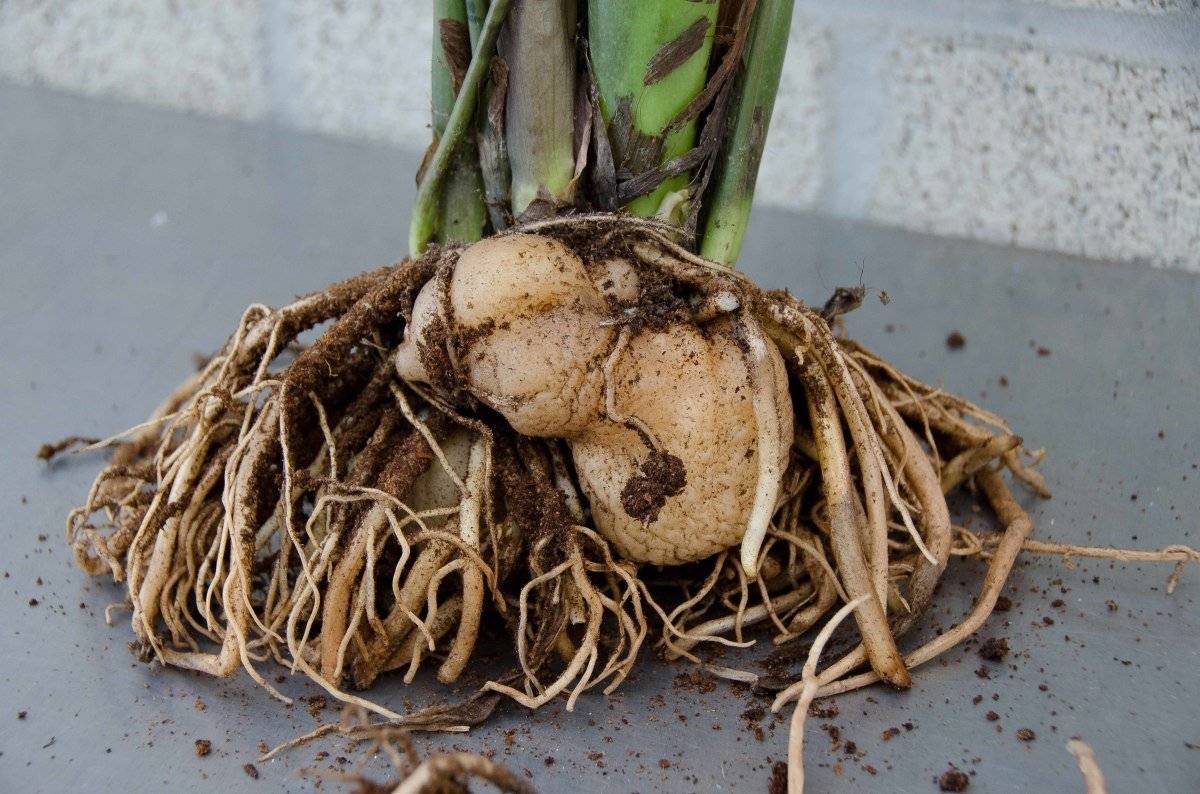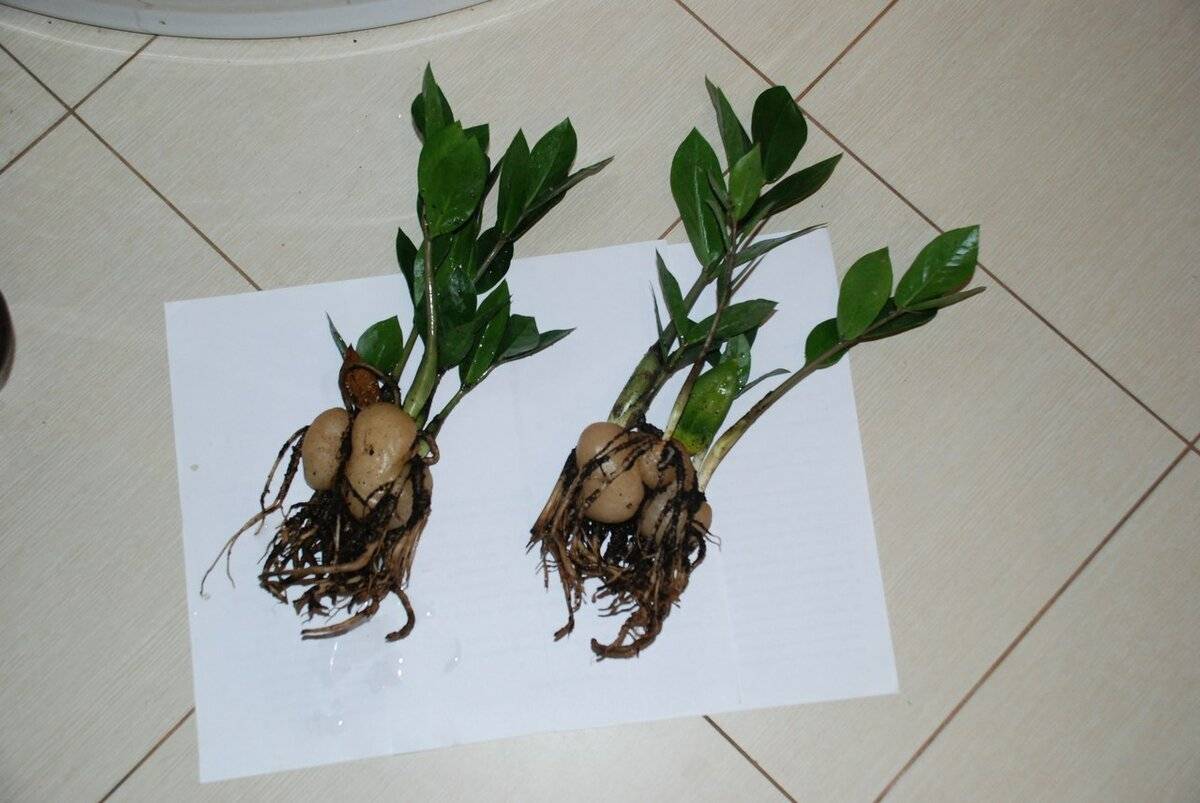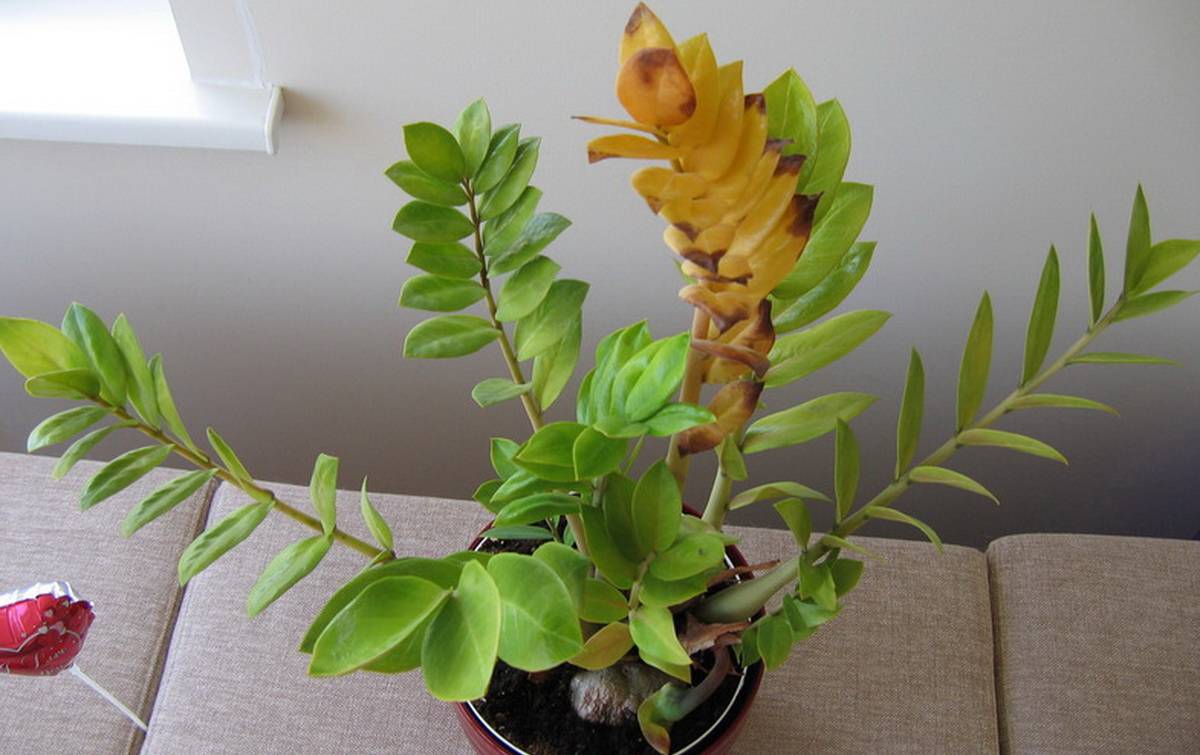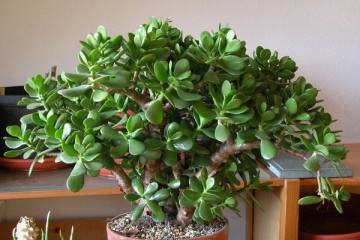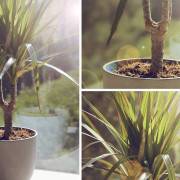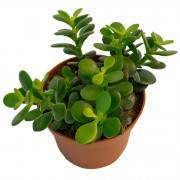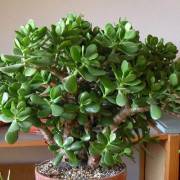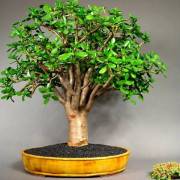Zamioculcas - dollar tree transplant
Content:
Zamioculcas is a beautiful plant with a rich green color. It is often called the dollar tree by the people. It is loved by designers for its beauty, presentability and unpretentiousness. It looks equally harmonious both in delicate rooms and in strict solid offices. It gained particular popularity in the late 90s. If the zamiokulkas has grown too much, the transplant is required immediately, otherwise there is a risk of losing the flower.
Zamioculcas: home transplant
Zamioculcas is an evergreen plant that belongs to the Aroid family. It has dense, rich green leaves. Due to their special shape, many believe that this is a trunk with leaves, but in fact, the trunk in the form of a tuber is in the ground. The leaves are pinnate, erect, have a pleasant glossy shine due to their natural waxy bloom.
Homeland is Africa, and gained popularity after growing in Dutch nurseries, from where widespread distribution was started.
To form a beautiful crown shape, it is enough to periodically turn the pot with the plant in different directions, then the stems will stretch evenly.
There are many superstitions around the plant, it is endowed with magical properties, it is believed that it brings love to a young girl, but only if you give a flowering tree.
Zamiokulkas, in addition to the dollar tree, has other names:
- eternal tree: the name is received for the rich green color;
- Zanzibar pearl, since the birthplace of the flower is the plain in Zanzibar;
- fat man, for dense stems and leaves;
- aroid palm, as it belongs to the Aroid family;
- the golden tree is believed to bring prosperity and well-being due to its ability to accumulate moisture in the leaves and trunks, which is considered a symbol of the preservation of wealth.
Zamioculcas has another name - for lazy housewives - and it is not casual, the plant does not require bright lighting up to 12 hours, tolerates rare watering, is indifferent to spraying, winters well and feels comfortable during the heating season. Plant height can reach up to 1 m, it looks harmoniously in compositions and as a single plant. It can be grown outdoors in the open field, but with all its advantages, there is one drawback - a difficult transplant.
How to transplant zamioculcas
In order for a plant to delight with its beauty, you need to know how to transplant a zamiokulkas, since it has a very powerful root system.
Transplanting a zamiokulkas at home requires preparation. Repotting is often not required as the crop grows slowly. A transplant is required after purchase, since the soil does not contain the necessary nutrients, it is temporary.
An adult houseplant should be replanted every two years.
It is better to transplant in the spring, since then it is easier for the plant to build up the green mass, but if an unscheduled transplant is needed, then it is allowed at other times of the year, taking into account some recommendations.
For an adult plant, you need to choose the right pot.
When choosing a pot, you need to consider:
- the size. It should be 2-3 cm larger than the previous container;
- material. It must be strong, since the roots grow quickly and well, but care must be taken that too tight a pot does not cause the death of roots and tubers. It is better for them to breathe in clay, and in plastic it is visible when it is time to transplant the flower and it is easier to extract the roots, since you can cut the pot;
- the shape should be shallow and wide so that you can easily get the roots out of the ground;
- drainage is required. They use gravel, expanded clay and vermiculite, which is able to return moisture to the roots.
What soil is needed for zamiokulkas
It is important to know what kind of land is needed for zamiokulkas. The roots need air, so the soil for zamiokulkas should be nutritious and loose. In its natural environment, zamioculcas grows on stony soils, therefore, peat, humus, sand, charcoal, sod or leafy soil can be part of the soil.
You can prepare the soil yourself by mixing it into garden soil in equal parts with additives, or you can purchase a universal soil by adding sand and perlite. Zamioculcas also feels comfortable if planted in the soil for succulents or ficuses.
Transplanting zamiokulkas into another pot, as a rule, can be done by the transfer method, that is, to save the earth near the roots, but this method is only suitable for an adult flower. It is necessary to carefully pull it out of the container with your hand, remove the excess soil, but leave the roots in the ground. If they are damaged or the plant has diseases, then it is necessary to rinse the roots, remove the damaged parts, then start planting.
Step-by-step instructions on how to transplant zamioculcas into another pot and take care of it:
- Choose a new container, determine the size, shape, material, drainage holes.
- Prepare the soil for zamiokulkas.
- Remove the plant from the container. If it grew in a plastic pot and is difficult to get, then you can carefully cut the flowerpot so as not to damage the roots. A clay or ceramic pot can be broken, but you should also monitor the condition of the roots, as they can be damaged by debris.
- Fill a new pot with a layer of drainage and a small amount of prepared soil. The amount of drainage depends on the size of the roots.
- Place the zamioculcas in a prepared container, fill the remaining space with the substrate, compact the soil.
- Part of the roots must be left above the surface without deepening the tubers.
- Moisten the soil a little, but do not water it.
- Place in a dark, warm place for the flower to take root better.
- Prepare a permanent place where the flower will be and grow. It grows well in both shaded and light parts of the house, but must be protected from direct sunlight. Favorable temperature - about 23 ° С, easily tolerates small fluctuations, feels comfortable at 16 ° С.
- Wipe the leaves with a damp cloth; it is not recommended to spray.
- Water rarely, once a week as the soil in the pot dries out. Tubers and leaves are able to accumulate moisture, so the plant can easily tolerate more than 15 days without watering. After transplanting, watered after 7-10 days.The flower does not tolerate stagnation in pallets, high room humidity. The larger the pot, the less watering can be done.
- It is better to place this exotic culture in a bright part of the room, but it is important to protect it from direct sunlight so that there are no burns. It is recommended to place the pot on the south or southeast side of the house. Can be grown outdoors in the shade of trees, so the plant acquires immunity and becomes more resistant to diseases and pests.
- Feed no more than twice a year - in spring or autumn. As a top dressing, nitrogen fertilizers can be used, which promote the growth of leaves and stems. Phosphoric ones stimulate the root system, potash ones - flowering, but since the flower rarely pleases with its flowering, such fertilizers are used less often. You can also take feeding for succulents, and when adding a universal one, you need to cut the dose in half.
- The plant lives for about 10 years, but it can be propagated, for example, by rooting a leaf, leaving it in the water for a while. After the roots appear, they can be planted in the ground.
Sometimes you need to plant a large plant, divide it into several parts. Then you should be very careful to cut the shoots, since the roots are very confused and can be damaged during division. After separation, the roots must be dried, and then they can be planted in a prepared container.
Possible problems
Zamioculcas can slow growth. There can be several reasons for the slow growth and lack of new shoots:
- adaptation to new conditions;
- the tree is in a dormant phase, for example, during the winter;
- located in a poorly lit room. Although the flower is unpretentious, with a small amount of light, the plant may die;
- the size of the pot was not chosen correctly: in small roots there is nowhere to grow, and with large shoots they do not grow until the roots fill the space of the pot;
- too much watering. Water should be watered as it dries with soft water, preferably pre-settled;
- wet soil. Roots lack air, possibly if there is no drainage at the bottom of the pot.
You should buy a young plant that better adapts to new conditions. The leaves of such specimens are bright green and without defects, such a tree is up to 30 cm high.When buying an adult specimen, you should pay attention to the crown, it should be even and well-formed, and the leaves should be juicy and fleshy.
If yellow leaves appear on the plant, the cause may be pests or inappropriate conditions, or the plant is undergoing a growth phase of young shoots. If the leaves turn yellow only on old stems, they cannot be removed, since then there will not be enough strength for the growth of a new shoot. After the end of the growth phase, the leaf will dry out and fall off by itself.
If the stem is accidentally damaged, then you need to cut it off at the base, sprinkle the cut with coal for disinfection and better healing.
The pests from which the flower most often suffers are spider mites, scale insects, aphids. A tick in apartments is quite rare; you can remove it by spraying it with tobacco tincture. The scabbard is dangerous in that it is noticeable only in adulthood, when a shell or shield appears, which is why it got this name. You can get rid of tobacco tincture with the addition of a few drops of kerosene and soapy water, you can also add denatured alcohol. Aphids are the most dangerous pest; they feed on plant leaves, taking away all the substances necessary for life. You can deal with it with special solutions.
Zamioculcas is a beautiful, unpretentious plant; any novice florist can take care of it. It looks noble and impressive, which is why it is now so widespread. Undemanding to watering, lighting, does not like spraying, can stay in dry soil for a long time due to its special structure. Leaves and tubers can accumulate moisture, so the plant does not die. He can suffer from excessive watering, as he does not like excess moisture. It is rarely necessary to transplant, especially adult plants. Zamiokulkas lives from 5 to 10 years, but it easily propagates by leaves, cuttings and with the help of roots, therefore it is quite simple to keep such a plant. Transplanting is difficult due to the large number of roots that are easy to damage, but with the right approach, this procedure will extend the life of the plant and renew it.

